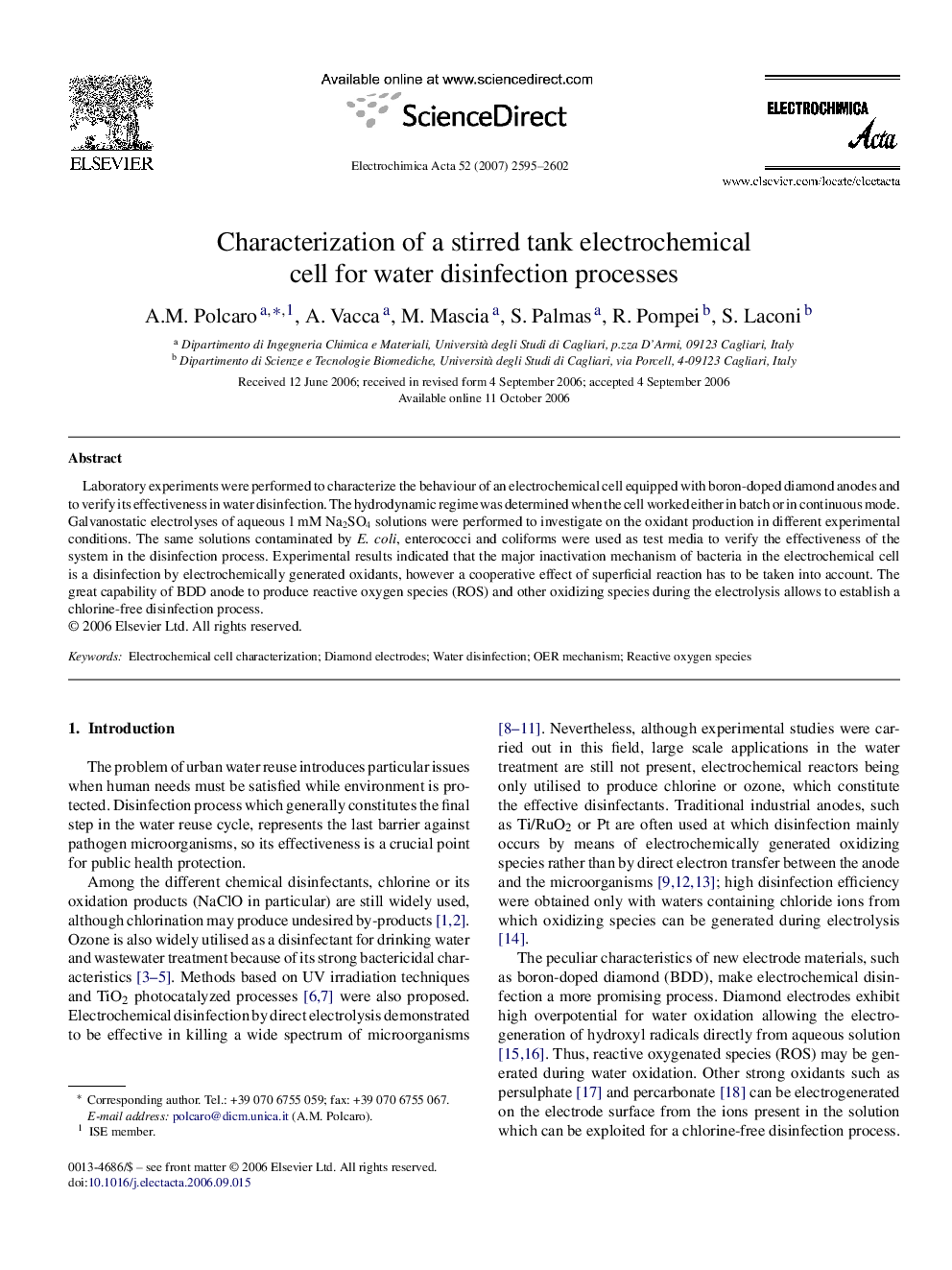| کد مقاله | کد نشریه | سال انتشار | مقاله انگلیسی | نسخه تمام متن |
|---|---|---|---|---|
| 194911 | 459802 | 2007 | 8 صفحه PDF | دانلود رایگان |

Laboratory experiments were performed to characterize the behaviour of an electrochemical cell equipped with boron-doped diamond anodes and to verify its effectiveness in water disinfection. The hydrodynamic regime was determined when the cell worked either in batch or in continuous mode. Galvanostatic electrolyses of aqueous 1 mM Na2SO4 solutions were performed to investigate on the oxidant production in different experimental conditions. The same solutions contaminated by E. coli, enterococci and coliforms were used as test media to verify the effectiveness of the system in the disinfection process. Experimental results indicated that the major inactivation mechanism of bacteria in the electrochemical cell is a disinfection by electrochemically generated oxidants, however a cooperative effect of superficial reaction has to be taken into account. The great capability of BDD anode to produce reactive oxygen species (ROS) and other oxidizing species during the electrolysis allows to establish a chlorine-free disinfection process.
Journal: Electrochimica Acta - Volume 52, Issue 7, 1 February 2007, Pages 2595–2602